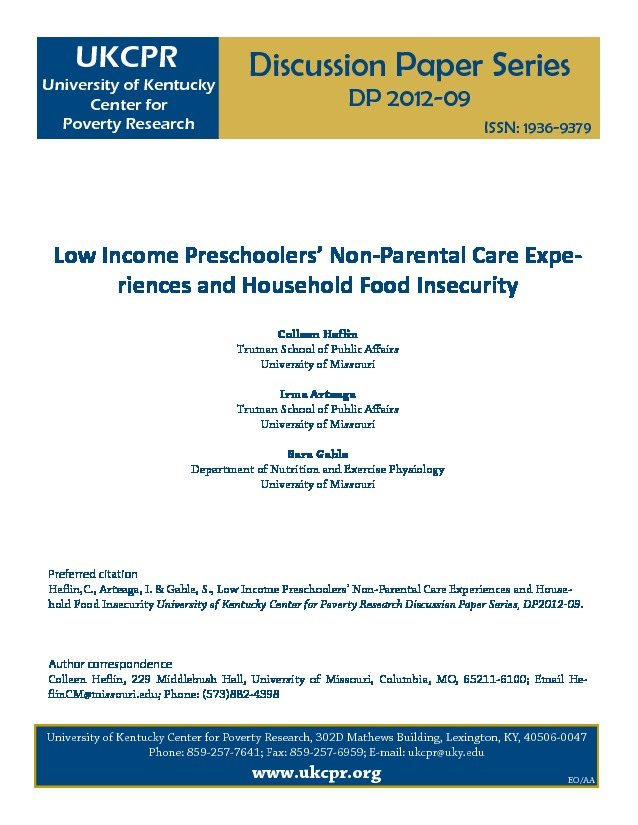Rates of food insecurity in households with children have significantly increased over the past decade. The majority of children, including those at risk for food insecurity, participate in some form of non-parental child care during the preschool years. To evaluate the relationship between the two phenomenon, this study investigates the effects of child care arrangements on food insecurity in households with children. To address the selection bias problem that arises from the fact that enrollment in different types of child care is not a random process, this study uses propensity scores techniques. The authors compare outcomes across five child care arrangement patterns: no non-parental care (i.e., exclusive parent care), relative care, non-relative care, center care, and Head Start. Our results demonstrate that for low income preschoolers, compared to no non-parental care, attending a child care center reduces the probability of both food insecurity and very low food security, relative care reduces the probability of food insecurity, and non-relative care increases the probability of very low food security.
Research
ChildrenPDF Thumbnail
